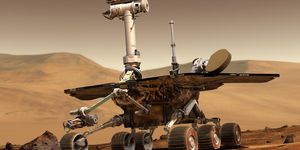Teaching Self-Driving Cars To Predict Human Movement
Researchers at the University of Michigan have collected data by vehicles through cameras, LiDAR and GPS—which allowed them to capture video snippets of humans in motion and then recreate it in 3D computer simulations. Specifically, they are teaching self-driving cars to recognize and predict pedestrian movements accurately than other current technologies.
"Prior work in this area has typically only looked at still images. It wasn't really concerned with how people move in three dimensions," said Ram Vasudevan, U-M assistant professor of mechanical engineering. "But if these vehicles are going to operate and interact in the real world, we need to make sure our predictions of where a pedestrian is going doesn't coincide with where the vehicle is going next."
Gearing vehicles with necessary predictive power requires technology that digs into the very minute details of human interactions and movement including the pace of a human's gait (periodicity), the mirror symmetry of limbs, and foot placement.
"Now, we're training the system to recognize motion and making predictions of not just one single thing -- whether it's a stop sign or not -- but where that pedestrian's body will be at the next step and the next and the next," said Matthew Johnson-Roberson, associate professor in U-M's Department of Naval Architecture and Marine Engineering.
Current machine learning uses autonomous technology dealing with two dimensions—still photos. But, the new “biomechanically inspired recurrent neural network" utilizing video clips that catalogs human movements to predict poses and future locations for one of several pedestrians from up to 50 yards on the scale of a city intersection.
"If a pedestrian is playing with their phone, you know they're distracted," Vasudevan said. "Their pose and where they're looking is telling you a lot about their level of attentiveness. It's also telling you a lot about what they're capable of doing next."
Source: Science Daily









